
John Ernst Steinbeck Jr. was an American writer and the 1962 Nobel Prize in Literature winner "for his realistic and imaginative writings, combining as they do sympathetic humor and keen social perception". He has been called "a giant of American letters."
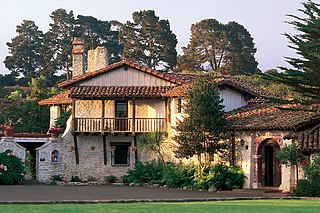
Monterey is a city located in Monterey County on the southern edge of Monterey Bay on the U.S. state of California's Central Coast. Founded on June 3, 1770, it functioned as the capital of Alta California under both Spain (1804–1821) and Mexico (1822–1846). During this period, Monterey hosted California's first theater, public building, public library, publicly funded school, printing-press, and newspaper. It was originally the only port of entry for all taxable goods in California. In 1846, during the Mexican–American War of 1846–1848, the United States Flag was raised over the Customs House. After Mexico ceded California to the U.S. at the end of the war, Monterey hosted California's first constitutional convention in 1849.

Cannery Row is the waterfront street bordering the city of Pacific Grove, but officially in the New Monterey section of Monterey, California. It was the site of a number of now-defunct sardine canning factories. The last cannery closed in 1973. The street name, formerly a nickname for Ocean View Avenue, became official in January 1958 to honor John Steinbeck and his novel Cannery Row. In the novel's opening sentence, Steinbeck described the street as "a poem, a stink, a grating noise, a quality of light, a tone, a habit, a nostalgia, a dream."
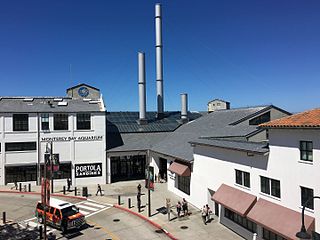
Monterey Bay Aquarium is a nonprofit public aquarium in Monterey, California. Known for its regional focus on the marine habitats of Monterey Bay, it was the first to exhibit a living kelp forest when it opened in October 1984. Its biologists have pioneered the animal husbandry of jellyfish and it was the first to successfully care for and display a great white shark. The organization's research and conservation efforts also focus on sea otters, various birds, and tunas. Seafood Watch, a sustainable seafood advisory list published by the aquarium beginning in 1999, has influenced the discussion surrounding sustainable seafood.

Edward Flanders Robb Ricketts was an American marine biologist, ecologist, and philosopher. He is best known for Between Pacific Tides (1939), a pioneering study of intertidal ecology. He is also known as a mentor who influenced the writer John Steinbeck, which resulted in a collaboration and coauthorship of the book, Sea of Cortez (1941). Eleven years later, and just 3 years after the death of Ed Ricketts, John Steinbeck reprinted the narrative portion of their coauthored book with a new publisher, but removed Ed as coauthor, while adding a biography of Ed Ricketts, and Steinbeck made a new title for the book as The Log from the Sea of Cortez (1946). Steinbeck also added a eulogy for Ricketts, though it was met with public backlash.
Bruce Wallace Ariss, Jr. was an American painter, muralist, writer, illustrator, editor as well as theater and set designer, amateur playwright and actor, and overall icon on the Monterey Peninsula, California.
Hovden is used for many place names and surnames in Norway. One meaning of the name comes from the Old Norse word for head (hovud), which refers to a steep, overhanging mountain or cliff in the vicinity. The second meaning is derived from the Norse word for sacrificial site (hov).

Cannery Row is a 1982 American comedy-drama film directed by David S. Ward in his directorial debut, starring Nick Nolte and Debra Winger. The movie is adapted from John Steinbeck's novels Cannery Row (1945) and Sweet Thursday (1954).

Cannery Row is a novel by American author John Steinbeck, published in 1945. It is set during the Great Depression in Monterey, California, on a street lined with sardine canneries that is known as Cannery Row. The story revolves around the people living there: Lee Chong, the local grocer; Doc, a marine biologist; and Mack, the leader of a group of derelict people.

Fisherman's Wharf is a historic wharf in Monterey, California, United States. Used as an active wholesale fish market into the 1960s, the wharf eventually became a tourist attraction as commercial fishing tapered off in the area.
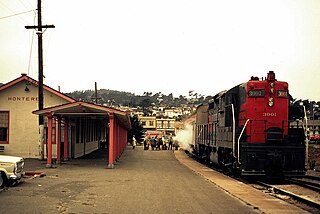
The Del Monte was a passenger train operated by the Southern Pacific Railroad between San Francisco and Monterey, California. It ran from 1889 to 1971.

Pacific Biological Laboratories, abbreviated PBL, was a biological supply house that sold preserved animals and prepared specimen microscope slides, many of which were of maritime aquatic species, to schools, museums, and research institutions. It was located in a building on what is now Monterey's Cannery Row on Monterey Bay in Monterey County, California.
New Monterey is a former unincorporated community incorporated in Monterey in Monterey County, California. It is located north of the Presidio of Monterey, at an elevation of 56 feet. Monterey's famous Cannery Row is located in New Monterey neighborhood.

Steven Whyte is a sculptor classically trained in the traditional methodology of figurative bronze and portrait sculpture living in Carmel, California. He has produced many public memorials and installations in both England and throughout the United States with subjects ranging from miners, to soldiers and fire fighters. He is credited with over fifty life size and larger bronze public figures and major monuments including The Silverdale Mining Memorial, The Lance Sergeant Jack Baskeyfield VC Tribute, The Spirit of 1948, and The Dr. John Roberts Monument. Whyte's multimillion-dollar, sixteen-figure monument in San Diego, California entitled National Salute to Bob Hope and the Military is one of his most notable works.
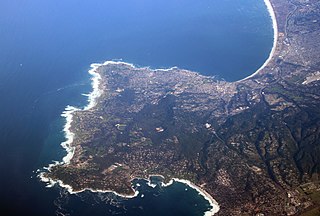
The Monterey Peninsula anchors the northern portion on the Central Coast of California and comprises the cities of Monterey, Carmel, and Pacific Grove, and the resort and community of Pebble Beach.
Safari Ltd is an American family-owned manufacturer and global distributor of animal figurine toys. Since 1982, they have produced painted figurines designed to educate children, with the stated goal of teaching the importance of nature and conservation through play.
Knut Hovden was a Norwegian canner, innovator, and businessman.
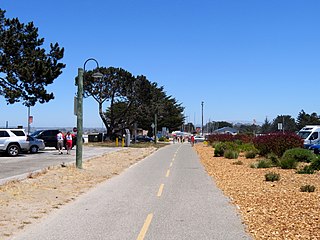
The Monterey Bay Coastal Recreation Trail is a trail that runs along the coast of the Monterey Bay. It stretches for 18 miles, between Castroville, California and Pacific Grove, California, and passes several tourist attractions along the way, including Cannery Row, the Monterey Bay Aquarium, and Fisherman's Wharf.
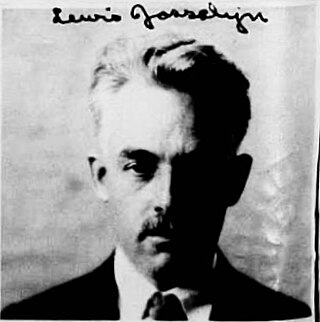
Lewis Josselyn,, was an American portrait, landscape, and community photographer and early resident of Carmel-by-the-Sea, California. He was the official photographer for the Forest Theater, a historic amphitheater in Carmel.















